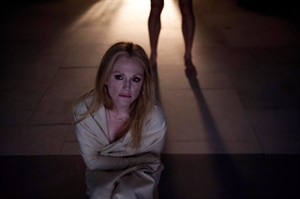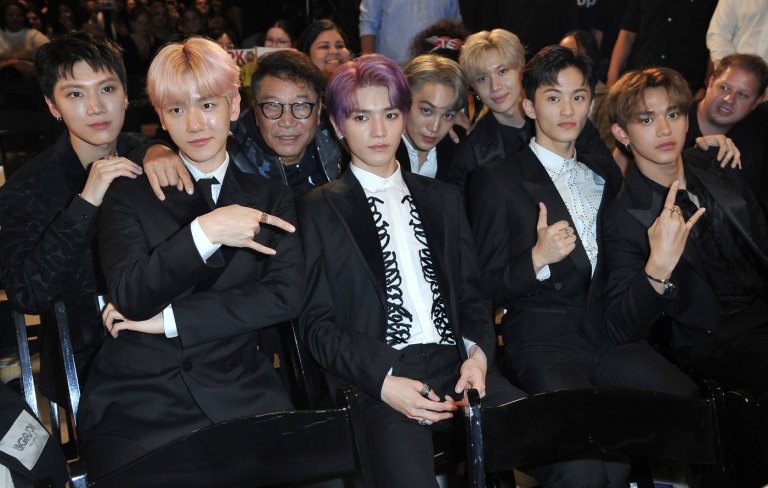Struggles of aging actors reflected in films including ‘Birdman’

TORONTO – From “Birdman” to “Clouds of Sils Maria” and “Maps to the Stars,” 2014 saw several films focused on the struggles of aging in show business.
“Maps to the Stars” director David Cronenberg says while Hollywood has explored such a theme before with films including “Sunset Boulevard,” it’s particularly poignant these days as social media puts a microscope on aging actors, creating a scrutiny that’s “very, very rough” and “not getting better.”
“In Hollywood, you exist in the business, that is your life. If suddenly you’re no longer onscreen, any of these screens, it’s like a kind of pre-death that precedes death. Your career dies before you die,” he says. “We all know of actresses, in particular, who after they hit the age of 40 they suddenly disappear — and they were really hot, hot, hot, everybody is talking about them and suddenly they’re gone and they’re not making movies anymore.
“The industry can be quite brutal that way and particularly for women, so that’s been around for quite a while, but it’s even more around now because everybody’s looking at these actors on the Internet microscopically.”
Cronenberg pointed to recent headlines and Twitter chatter over the apparent difference in actress Renee Zellweger’s face at Elle magazine’s Women in Hollywood event in October. Many fans claimed the 45-year-old had become unrecognizable and speculated it was due to plastic surgery. But in a statement to People, she said she looks different simply because she’s aging and “living a different, happy, more fulfilling life.”
“Suddenly everybody’s saying, ‘What’s happening with her face?’ and you get blowups of stills with circles around where her cheeks have changed or something,” said Cronenberg. “I mean, my God, how can you withstand that kind of scrutiny?
“I think it’s getting worse because of the pressure of Twitter and all of that.”
Aging onscreen is a major theme in “Maps to the Stars,” in which Julianne Moore’s Havana is a fading, youth-obsessed actress who is desperate for the lead in a remake of a film that starred her late actress-mother (Sarah Gadon). Canadian Evan Bird plays a smug child star whose group of self-centred young celebrity friends often mock their elder peers, labelling actresses in their 20s and beyond as “menopausal.”
With her duck lips, Havana has clearly turned to plastic surgery in order to turn back the clock, and Cronenberg says Moore “was really experimenting with the idea of getting her lips Botoxed, which she’s never done for herself, but she felt that this actress would be one who would do that.”
“Then she finally decided to kind of act it, and so she kind of acts with her lips a little Botoxed,” adds. “She could do it with acting without actually having to get Botox.”
And how does Cronenberg feel about actors who’ve had work done to their faces or bodies?
“For me, it depends on the role,” he says. “You even think about doing a nude scene and does a woman have breast implants or not? And the answer is, well, if the actor’s character would have had breast implants, then sure, and if not, not. It’s weird. It becomes an issue.”
The 54-year-old Moore, a four-time Oscar nominee, says she hasn’t found being over 40 to have been a hindrance to her career. And she didn’t base her character on anyone in particular.
But “there are many colleagues of hers, women who at her age do not have a career but used to have a career,” says Cronenberg.
“So she knows a lot of actresses who have been in this situation that this character is, that is a kind of desperation because her career is kind of disappearing and therefore it’s an existential thing. It’s like she’s disappearing, too. If she doesn’t have a movie career, she no longer exists.”
“Clouds of Sils Maria” also features an aging actress fretting over the future of her career. Juliette Binoche stars as Maria Enders, who agrees to star in a revival of the play that made her famous 20 years ago. To her dismay, the director wants her to take on not the younger character that she played back then, but the older one.
“The only way for me to stay young is to let go of the youth,” says Binoche. “You cannot hang on to the past. You cannot try to be young when you’re not young anymore. But the youth is within yourself. How do you renew yourself, how do you go to a new layer of yourself? That is the real youth, that is the renewance of yourself.”
In “Birdman,” Michael Keaton’s Riggan is a former superhero film star desperate to revive his washed-up career as he heads an ambitious new Broadway play. As the cast rehearses for the stage production, Riggan is haunted and taunted by his old avian superhero character, who serves as a constant reminder of his irrelevance.
In all three films, social media is an issue for the aging stars, who are grappling with wanting to connect with younger audiences through it but also not be exploited by it. In one memorable scene in “Birdman” (spoiler alert!), Riggan finds himself naked amidst crowds in the middle of Times Square, prompting bystanders to film him on their cellphones and broadcast it on YouTube.
Smartphones and tablets are featured in “Clouds of Sils Maria” as Binoche’s character tries to learn the impact of social media on an actor’s career, particularly YouTube, where the play’s younger star (Chloe Grace Moretz) is seen in some scandalous videos.
The films also reflect on what it takes to be a star these days, as social media and celebrity news sources such as TMZ fuel a desire for paparazzi coverage and create celebrities out of those with a large number of followers but little amount of skill.
“I think everybody now is a celebrity,” says “Birdman” director and co-writer Alejandro Gonzalez Inarritu. “They want a space in social media. Everybody is looking for validation, no matter who you are, and I think that’s a need of the human being condition, to look for affection or recognition or validation. I think just the ways people are getting it is different, but this is a self-obsessed society, I guess.
“All those selfies, the amount of pictures people take of themselves is just insane. So I think we are in that period that yes, (this film trend) probably has something to do with that, I guess.”
As film critic Richard Crouse puts it, the definition of what it is to be a movie star has changed in the social media age. Some major celebrities are no longer the big box-office draws they used to be and they’ve had to put more effort into the promotional circuit, such as late-night TV appearances.
“It used to be that you’d announce a Tom Cruise movie and people would be lined up around the block to see it, and that no longer holds true unless the movie happens to be called ‘Mission: Impossible’ and then people will go see it with him in it,” says Crouse, a journalist and author who has two syndicated weekly columns in the Metro newspaper and a syndicated Saturday afternoon radio show on Newstalk 1010 in Toronto.
Notes “The Gambler” director Rupert Wyatt: “You’re not seeing as many of the younger generation coming up on the basis of the craft, of the work.”
“The movie stars of the Meryl Streep generation and the generation beneath her, I would say in some ways are the last generation of filmmaking and now the popular culture is sort of beginning to dominate,” he says. “Movie stars were superseded by the model business and now it’s more kind of just overall entertainment, and so filmmaking and actors within that world that are focused exclusively on the craft are becoming more and more unusual.
“So I think the faces that represent cinema are just getting older, because it’s an older generation. That’s good in some ways — it allows for more interesting older parts.”
— Follow @VictoriaAhearn on Twitter.
Join the Conversation!
Want to share your thoughts, add context, or connect with others in your community?
You must be logged in to post a comment.


















